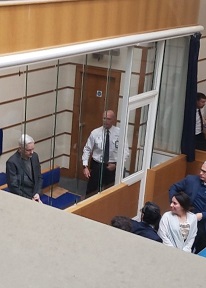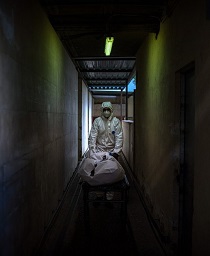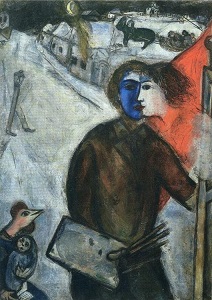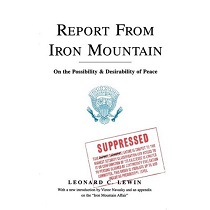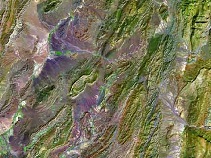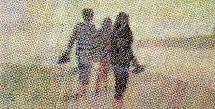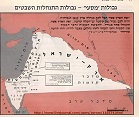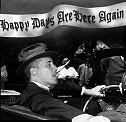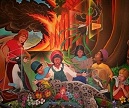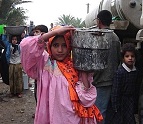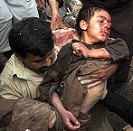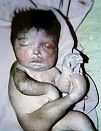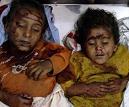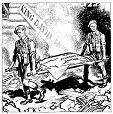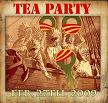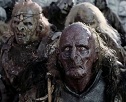Another rigged election in Afghanistan
Tom Peters
WSWS
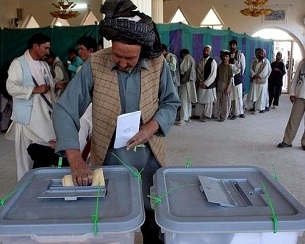
Today’s elections in Afghanistan for the 249-seat Wolesi Jirga, or lower house of parliament, are a travesty of democracy. The poll further discredits the puppet regime of President Hamid Karzai, who was re-elected last year on the basis of widespread fraud.
The election takes place under the shadow of the Obama administration’s military “surge,” which has increased the number of foreign troops in the country to more than 140,000. Civilian and military deaths are at record levels, as coalition forces push into Taliban-controlled areas.
As a result of the escalating violence and the extent of Taliban influence, voting will not take place at all in many areas of the southern and eastern provinces, such as Helmand and Kandahar. The Independent Election Commission (IEC) has said that around 1,019, or 15 percent, of an initially planned 6,835 polling centres will not open due to a lack of security, effectively disenfranchising millions of people. The Taliban has opposed the election and vowed to attack polling booths, and foreign and Afghan forces, to disrupt the election. Fearing attacks, the United Nations Mission to Afghanistan has withdrawn 300, or close to one third, of its permanent international staff.
Voting at other polling stations will be subject to manipulation. The Free and Fair Election Foundation of Afghanistan (FEFA), which is responsible for most of the monitoring, says its representatives will only be present at 65 percent of polling stations. According to the Guardian, nearly all foreign monitoring organisations “have scaled back their efforts to monitor voting compared with their presence during the August 2009 presidential election”.
In an indication of the ballot stuffing being prepared, the IEC revealed this week that 3,000 fake voter registration cards had been seized in Ghazni. Foreign observers told Britain’s Daily Telegraph that supporters of the Karzai regime had offered Afghan election officials up to $500,000 to falsify returns. One observer, Stephen Carter, told the paper that the “electoral process … is more about the market place for ballot rigging and how effective one can be at organising fraud”.
The US government and its allies have attempted to cover up the blatantly anti-democratic character of the election. Secretary of State Hillary Clinton last month described it as “an important milestone on [Afghanistan’s] road to becoming a full and rightful member of the community of democratic nations”. NATO Secretary-General Anders Fogh Rasmussen declared that the election would be “more transparent and reliable” than last year’s presidential poll. Staffan de Mistura, the UN envoy to Afghanistan, said the ballot “will not be perfect but based on preparations by the Afghan government I feel assured this election will be better than last year's election”.
Such assertions are farcical. The Karzai regime’s “preparations” have included disqualifying dozens of political opponents through a “vetting committee” ostensibly set up to remove candidates with links to illegal armed groups. A commissioner from the Electoral Complaints Commission, an Afghan government body with UN backing, told the Afghanistan Analysts Network (AAN): “We know the list [of disqualified candidates] is full of innocent people and not of warlords”. The AAN quoted an IEC official who said vetting had been “hijacked by various ministries and state officials”.
Despite the limited powers of the Wolesi Jirga assembly, Karzai is taking steps, with tacit US backing, to ensure that it does not threaten his hold on power. The approved list of 2,513 candidates includes many figures with whom Karzai has collaborated since the fall of the Taliban. Prominent among them is Abdul Rasul Sayyaf, leader of the Ittehad-e Islami faction, who has been tipped to become the next speaker of the house. Sayyaf’s forces massacred hundreds of civilians in Kabul, the capital, during the brutal factional fighting between different mujahideen groups in the early 1990s.
Warlords and militia leaders dominate most provinces that are not under the control of the Taliban or other anti-occupation groups. In June, dozens of people protested in Mazar-i-Sharif against the inclusion of Haji Mohammad Rahim and Gul Mohammad Pahlavan on the list of candidates for the northern provinces of Sar-e Pol and Faryab. Rahim is a former commander of Jamiat-e Islami, another faction involved in the murderous struggle over Kabul after the Soviet withdrawal in 1989. Pahlavan was a leading commander in the Jombesh militia, controlled by former Northern Alliance commander General Abdul Rashid Dostum. Dostum’s forces were responsible for massacring hundreds of Taliban prisoners in Mazar-i-Sharif in 2001.
Politicians who oppose Karzai and his US backers have been marginalised and threatened. Malalai Joya, who was expelled from the Wolesi Jirga in 2007 after denouncing its occupants as “warlords and drug lords,” is not standing for re-election. In an interview with McClatchy Newspapers, she said: “A majority of the seats in parliament will belong to photocopies of Sayyaf”.
Comments from ordinary Afghans reveal deep hostility to the entire political establishment and the US-led occupation. In Kandahar, which is under siege by US forces and where voting will most likely not take place outside the city, resident Shah Mohammad told the Institute for War and Peace Reporting (IWPR): “Security is deteriorating … civilians are being killed by foreign bombardments, people are getting poorer day after day, and no development work has been implemented. But our members of parliament are just lining their pockets. Their mouths are taped shut with dollar bills, and they cannot articulate the people’s views.”
Jamil, a resident of Nangarhar, told the IWPR that he would not vote for any of the candidates, saying they had done nothing but enrich themselves. Describing social conditions in the province, he said “there is no electricity … and people are unemployed and suffer under the unauthorised searches conducted by foreign troops”.
Two clashes this week highlight the popular hatred of the Karzai administration and the US-led occupation—and the violence used by the regime to suppress protests. In Kabul on Wednesday, at the Kandahar Bridge, police were ordered to advance toward a group of demonstrators who were throwing stones and shouting “Death to America”, “Death to Karzai” and “Death to the slaves of the Americans”. Two demonstrators were shot in the chest by police, according to Dr Kabir Amiri, director of Kabul’s network of hospitals.
On Thursday, several hundred people protested and pelted Australian troops with rocks in response to reports that copies of the Koran were being burnt at an Australian forward operating base just north of Tarin Kowt. A coalition soldier shot dead a protester who allegedly held a rifle. Australia’s defence ministry immediately claimed that the killing was in accordance with its rules of engagement.
While Washington is determined to press ahead with the election, there are some concerns in ruling circles that the result will make it harder to justify the nine-year war, which is overwhelmingly opposed by the US population. On September 5 the New York Times called for the event to be postponed on the grounds that the possibility of fraud could further alienate “cynical and disenchanted Afghans” from the corrupt Karzai regime.
Karzai’s government is in deep crisis. While he has sought to hold peace talks with the Taliban, and other opposition groups such as the Hezb-e Islami, these offers have so far been rejected. For now, the US is backing Karzai’s appeals for negotiations with insurgents. Some of Karzai’s former allies, however, are expressing open hostility toward Karzai and any such negotiations. Hazara warlord Mohammad Mohaqeq, who supported Karzai’s 2009 re-election campaign, told the Wall Street Journal this month that he felt “betrayed by the president” and accused Karzai of pursuing “the Talibanisation of Afghanistan”.
Uzbek warlord Mawlawi Khabir, a leading figure in the Jombesh party, denounced what he called Karzai’s “clear ethnic agenda … to convince the Taliban and other fellow Pashtuns that he is on their side”.
Final election results will not be released until October 30. Whatever the outcome, the election further exposes the lie that the US-led invasion was intended to bring democracy to Afghanistan. From the outset, the aim of the occupation was to transform the country into a base of operations for the US to pursue its ambitions for domination in the energy-rich regions of the Middle East and Central Asia.
___________________________________________________________________________________
URL: http://www.a-w-i-p.com/index.php/2010/09/18/another-rigged-election-in-afghanistan

